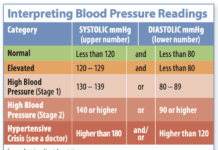You also have to remember to actually take the pills, study finds.
A new meta-analysis by researchers at Tufts, the University of Zurich and other institutions may help explain seemingly contradictory recent recommendations by experts from the US Preventive Services Task Force (USPSTF) about vitamin D for bone health. Supplements of 800 IU of vitamin D daily-provided study participants actually took them-were found to significantly reduce the risk of fractures.
Thinkstock

This summer, two expert panels from the USPSTF, appointed by the Department of Health and Human Services, weighed in with advice on fracture prevention that was apparently at odds: First, one group concluded that vitamin D supplements, as well as regular exercise or physical therapy, can help prevent falls in older adults, with the greatest benefits seen among those most at risk. But the ink was barely dry on that report when a second USPSTF panel issued a draft recommendation that vitamin D supplements, as well as calcium pills, had no effect on the incidence of osteoporotic fractures.
The conclusions may differ because of different doses of supplemental vitamin D-a topic spotlighted by the new meta-analysis. The review by Heike Bischoff-Ferrari, MD, DrPH, a visiting scientist at Tufts HNRCA Bone Metabolism Laboratory, laboratory director Bess Dawson-Hughes, MD, and colleagues was published in the New England Journal of Medicine. Dr. Bischoff-Ferrari is also director of the Centre on Aging and Mobility at the University of Zurich.
Researchers pooled data on 31,022 participants in 11 controlled trials. Unlike previous studies and meta-analyses, this review focused not only on how much vitamin D, with or without calcium, people were assigned to take; it considered how much participants actually took.
Supplements of at least 800 IU of vitamin D, the review found, were associated with lower risk of both hip and non-vertebral fractures. When results were analyzed based on assigned doses, results were modest: a statistically non-significant 10% reduction in hip fracture risk and a significant 7% lower risk of non-vertebral fractures in the vitamin D groups versus control groups.
But the protective association jumped when the scientists took into account how much vitamin D participants actually took-weeding out people assigned to vitamin D who didnt take enough to be effective. Among people who actually took 792 to 2,000 IU of vitamin D daily, hip fracture risk was 30% lower and relative risk of any non-vertebral fractures was 14% lower.
The importance of higher doses of supplemental vitamin D echoes a review by Dr. Dawson-Hughes published late last year in Proceedings of the Nutrition Society. That analysis of clinical trials of supplemental vitamin D on muscle performance and fall prevention in older adults noted that daily doses of up to 600 IU were ineffective. On the other hand, doses of 700 to 1,000 IU significantly lowered fall risk. Dr. Dawson-Hughes concluded, Overall, there is about a 20% lower risk of falling with supplementation.
Dueling Experts?
Dosage may also explain the surprising recommendations of one USPSTF expert panel against vitamin D and calcium supplements. Those experts relied heavily on findings from the Womens Health Initiative Study of more than 36,000 postmenopausal women who were given 400 IU of vitamin D and 1,000 milligrams of calcium daily. Finding adequate evidence that such low doses dont prevent fractures, the experts concluded that the slight extra risk of kidney stones from calcium pills tilted the scales against supplementation.
What about higher levels, especially of vitamin D? However, that report went on, there is inadequate evidence regarding the effect of combined vitamin D and calcium supplementation on fracture incidence in postmenopausal women.
Those negative recommendations got more headlines than a task force report issued only weeks before that advised vitamin D supplementation at 600 to 800 IU a day. Those experts looked at nine trials of vitamin D supplementation, with follow-up periods ranging from 6 to 36 months. Overall, the trials found an average 17% reduction in risk of falling, a major risk factor for fractures and other injuries. The largest effect was seen in studies that targeted vitamin D-deficient seniors. The report, published in Annals of Internal Medicine, also examined 18 studies of exercise or physical therapy totaling about 3,500 people older than 75. Those interventions were associated with a 13% reduced risk of falling.
Adding It Up
Before you throw up your hands and draw your own conclusion that these experts cant get their stories straight, consider the dosage details that didnt necessarily make the headlines. The takeaways from this flurry of findings may not be so confusing, after all:
- Get plenty of calcium from food, not pills. Dietary calcium appears to be not only more effective for bone health, but avoids the (slight) possible risks of supplements.
- If youre taking vitamin D supplements, since it can be challenging to get adequate vitamin D from diet alone (or from sunlight in winter months), make sure youre getting enough to do you good. The Institute of Medicines updated recommendation for vitamin D for older adults is 800 IU daily. Everyone agrees that there is no evidence of danger from vitamin D intake up to 4,000 IU, Dr. Dawson- Hughes says. You wont be hurting yourself.
And protecting your bones is important: Falls are the leading cause of injury in adults aged 65 years or older. Some 30% to 40% of community-dwelling adults older than 65 fall at least once a year, and 5% to 10% of those who fall will suffer a fracture or other injury.
TO LEARN MORE: New England Journal of Medicine, July 5, 2012; abstract at www.nejm.org/doi/full/10.1056/NEJMoa1109617.






















